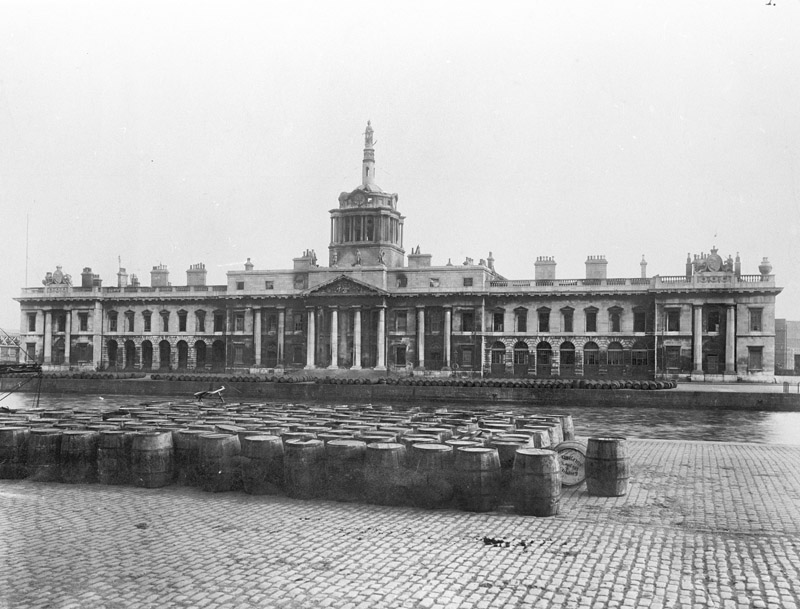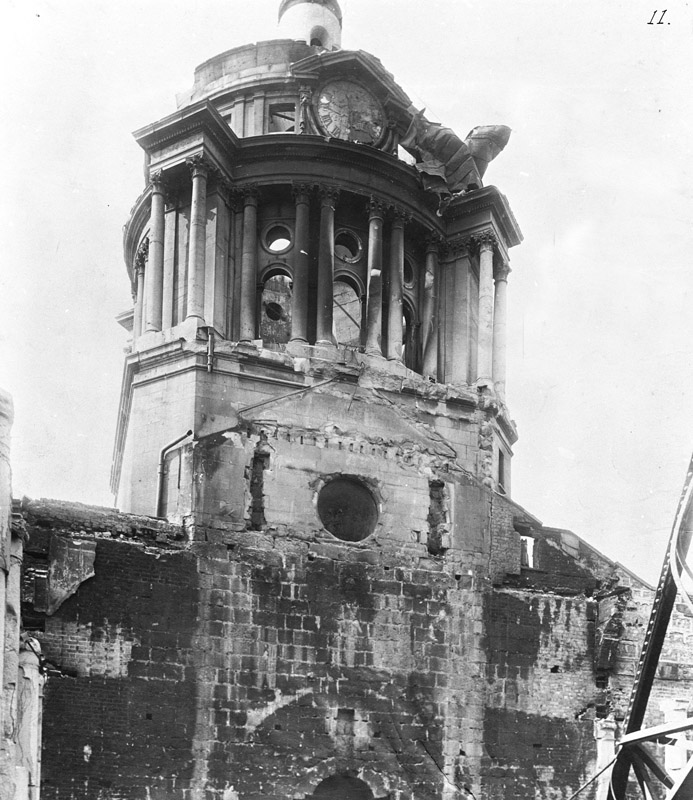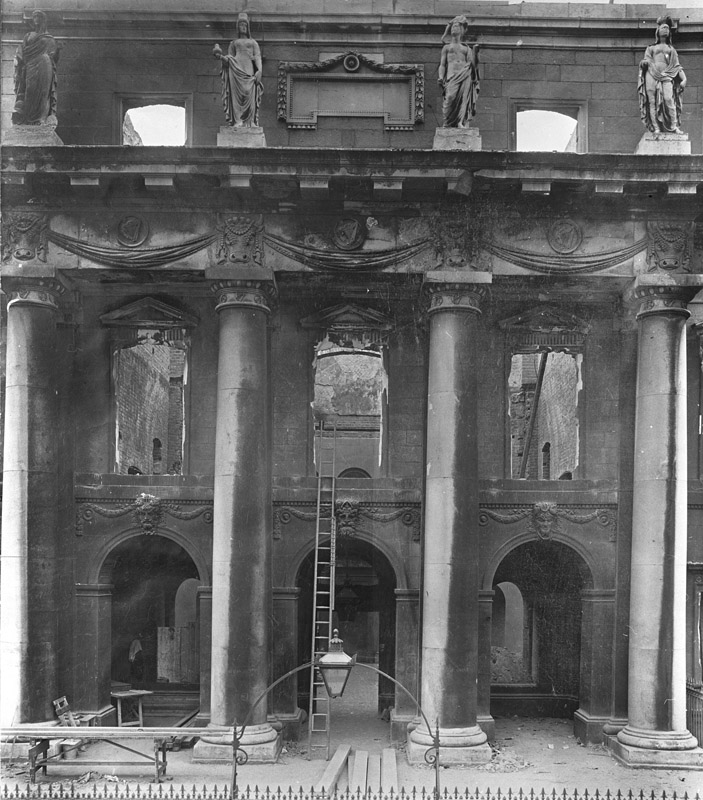A Military Analysis
Introduction
A military analysis is a method used by armies, historians and students of history throughout the world to provide a systematic approach to the study of battles, campaigns, and other military operations. Battle Analysis provides a method of understanding conflict and the complexity of these operations. Those interested in history must be able to integrate a variety of sources of information, determine the relevance of the information and assess the situation based on the context.
It is designed as a general study guide to ensure that significant actions or factors affecting the outcome of a battle or operation are not overlooked.
At its very core, a Battle Analysis is a tool to help us understand some of the constants which govern military actions, as well as the multitude of variables.
The military suggests that a plan for a special operation should be:
A simple plan, carefully concealed, realistically rehearsed and executed with surprise, speed and purpose. Based on this description, the operation can be divided into a number of phases which enables one to analyse the mission and its outcome.
Origins:
For almost two years, 1919 to 1921, the Irish Republican Army (IRA) had fought a war of insurgency against British rule in Ireland. The British government launched a counter-insurgency campaign which witnessed the bolstering of its police force, the Royal Irish Constabulary, with reinforcements, the deployment of a Specialist Forces unit in the form of the Auxiliary Division, and an increase in military support for the British administration on the island.
While the IRA had achieved a number of successes in the early phases of their insurgency campaign, especially in the area of propaganda, by May 1921, they had suffered a number of setbacks in relation to their military campaign. Many experienced operatives had been killed, captured and imprisoned and many arms caches had been discovered by the British forces. Weapons and ammunition were in short supply, as were those experienced enough to carry out such operations.
At a meeting of the council of the Headquarters Staff of the Irish Republican Army in early 1921, the military situation in Ireland was discussed. At this meeting it was decided that ’the time had come to deliver a smashing blow to England-some bigger military operation than anything yet attempted’. While a number of targets were examined, the Customs House on Custom House Quay was identified as a possible target. The destruction of this building and its contents would reduce the must important branch of British Civil Government in Ireland to virtual impotence and would, in addition, inflict on Britain a huge financial loss of an estimated two million pounds. After careful consideration, senior republican commanders ordered a reconnaissance of the building and a feasibility study to be carried out, to examine the possibility of conducting a raid. The insurgency campaign would now enter its final phase, that of a large scale military operation, involving hundreds of personnel, against a target within enemy lines, a ‘risk all mission’, that some considered was a last throw of the dice.
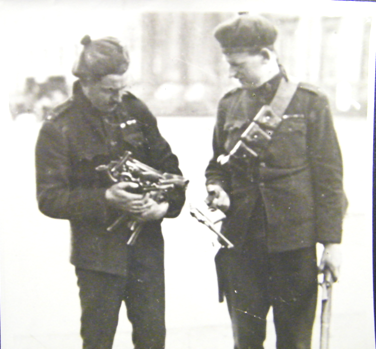 In spite of the fact that it was the largest operation undertaken by the Irish Republican Army during the period from 1919 to 1921, its planning and execution caused considerable controversy among those tasked with carrying out the mission. The aftermath of the operation, was somewhat overshadowed by personal opinions of those who planned and took part in the mission. Politics has played a major role in sidelining this military operation and consigning it to the dusty annals of an archive.
In spite of the fact that it was the largest operation undertaken by the Irish Republican Army during the period from 1919 to 1921, its planning and execution caused considerable controversy among those tasked with carrying out the mission. The aftermath of the operation, was somewhat overshadowed by personal opinions of those who planned and took part in the mission. Politics has played a major role in sidelining this military operation and consigning it to the dusty annals of an archive.
A military analysis of the operation reveals the initial strategy, the plan, the actual raid and its outcome, resulting in one of the most compelling and surprising stories in Irish military history.
The Mission
The mission objective was to disrupt and cripple British government administration in Ireland. While a number of small operations against government targets had been carried out throughout the country, senior Republican commanders wanted an action that would not only damage British administration, but would also double as a propaganda coup that would highlight their struggle throughout the world.
The Custom House was identified as a target because the following government departments were housed in the building; Inland Revenue, Local government, Estate Duty Central Registers, Stamp Duty, Income Tax and Joint Stock Company Registers. The intention was the total destruction of this building and its contents, which would reduce an important branch of British Civil Government in Ireland to virtual impotence and would, in addition, inflict on Britain a huge financial loss of an estimated two million pounds.
The Plan:
History has left a rather distorted picture of the Custom House raid. Though this military operation took place almost 100 years ago, very little has been written on the subject. The operation and its aftermath, have been surrounded by controversy for almost a century. Because of this, the story has been somewhat avoided many military analysts and historians. Original sources are limited except in Witness Statements held by Military Archives, personal family memoirs and the few articles in papers and journals.
It is perhaps those family memoirs and events like this that have to some extent kept the operation in the public’s eye. So in presenting a military analysis of the operation one must examine what is available, piece together the plan, assess the operation and those that took part and examine the results.
The plan was as follows.
At 12.00 hours on the 25th May 1921, a force of 120 men, supported by auxiliary units from other Battalions, were to assemble at the designated staging area of Oriel Hall in Oriel Street. On arrival, men would be issued with weapons and ammunition and the tools required for the operation. The attacking force was to approach the target in small groups using the run up to the lunch rush hour as cover. Police guards at the target or in the vicinity of the target were to be neutralised. The immediate area would be secured by units of the 1st Battalion. Any approach by enemy forces was to be checked.
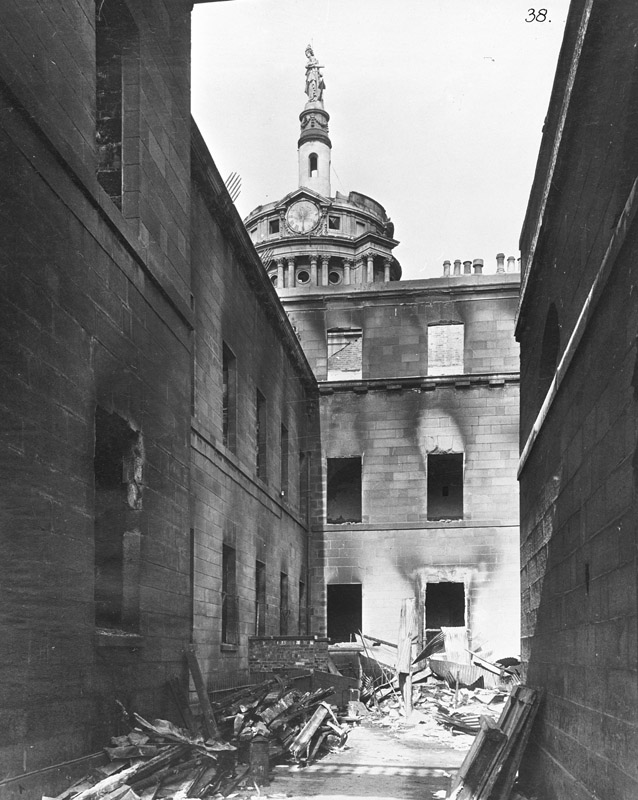
The main attack was to commence at 13.00 hours. Having secured the main entrance, no one was to be permitted to enter or leave the building while the operation was in progress. Each separate area of the building was to be secured and all staff were to be brought to the main hall. They were to be searched to make sure that no confidential papers were being hidden or taken from the offices.
As each operative entered the target, they were to take with them two 2 gallon tins of paraffin from a lorry which would deliver the incendiary to the building. They would then proceed to their designated positions throughout the building and prepare its contents for ignition. Fires were to be started on the top floor and each unit was then to move down through the building, setting fire to offices as they withdrew to the entrance hall. In the event of any problems occurring, the commander would signal a withdrawal by giving a blast on a whistle. Egress from the area would be made using the lunch time rush hour and the evacuating staff as cover. Estimated time for the mission was to be twenty minutes.
There is a military axiom which warns that no plan survives the first contact. Once the Custom House operation commenced, this would seem to have been the case.
Area of Operations:
The area of operations was located in the centre of Dublin city, along Custom House Quay on the River Liffey. The Target was a Palladian-styled building designed by James Gandon, consisting of two storeys over a basement. The building, constructed from Portland stone is 375 feet in length and 205 feet in depth consisting of four different facades linked by pavilions at each corner. The formal south entrance, with its pediment supported by four columns below a narrow dome, is located in the central block that faces the River Liffey.
Beresford Place and Memorial Road circumvent the complex and Custom House Quay fronts the building onto the river Liffey. All roads leading to the complex were and still are busy thoroughfares from the north of the city to the south and from the west to the east. Traffic to and from the docklands would pass through the area as well as the large workforce that serviced the quays, the local retail shops and government buildings.
The Right Force:
Commandant Tom Ennis, officer commanding the 2nd Battalion, IRA, was appointed in charge of the operation which took three months to plan. Detailed reconnaissance of the building and the area surrounding the target took place regularly while Liam O’ Doherty, O/C 5th Battalion (Engineers), obtained plans of the building from the National Library. This mission was to be a combined operation of all the Battalions in Dublin city and would consist of the following units;
The 1st Battalion would cover approaches to the Custom House and cover surrounding Fire Stations. They would be in positions at Liberty Hall, Lower Abbey Street and Gardiner Street.
The 2nd Battalion would make up the main raiding party that would carry out the operation. Members of ‘the Squad’ would also take part in the raid on the building. Members of the 3rd Battalion would occupy Tara Street Fire Station and prevent or delay any response from the Fire Brigade. The 4th Battalion would prevent or delay any response from the Fire Brigade at Thomas Street.
The 5th Battalion were detailed to sever all telephone communications from the Custom House.
Republican forces were a collection of units that were not conventionally trained. Volunteers did not possess a standard uniform, weapons or equipment. Their techniques in urban guerrilla warfare depended on speed and strike ability and to utilise their knowledge of the urban landscape to evade capture.
Each raider was to be armed with a revolver and six rounds of ammunition while those providing over-watch were issued with automatic pistols. A captured Lewis Machine gun would form part of the covering party.
Those tasked with raiding the building were ordered to obtain a hatchet which was to be picked up on the way to the target from shops in the areas in order to avoid detection from enemy forces. In total there would be an estimated 200 men taking part in the operation, the largest deployment of personnel that had ever participated in a mission in Dublin city.
Crown Forces:
Once the mission commenced, republican forces would be faced with a number of British units that were located within the area of operations. The Dublin Metropolitan Police would have officers outside the target. These more than likely would be unarmed constables. Due to the element of surprise, these officers did not pose a problem and would be taken prisoner.
In the time frame that the operation was to take place, there were two major British units that would react within minutes. They were F & Q Companies of the Auxiliary Division of the Royal Irish Constabulary. F Company was located in Dublin Castle. This rapid reaction unit could be expected to muster within minutes and travel at high speed in Crossly tenders to the target. They would be supported by armoured cars with mounted machine guns.
Q Company was located at the Great North-Western Railway Company Hotel at the North Wall, Dublin. This unit performed dock and harbour security and could also be expected to react within minutes. They too would also be supported by armoured vehicles with superior fire-power.
The Auxiliaries were the British Special Forces unit of the time, comprising of ex-officers from the Army, Air Force and Navy. The unit, though aligned with the police, were a military force that was used as a rapid reaction force by the authorities.
In-lying pickets of British troops would be despatched A.S.A.P. to the target. There were an estimated 10,000 British troops on duty within Dublin city in May 1921. These would come from a number of possible barracks in the city, Ship Street Barracks Dublin Castle, the Royal Barracks, and Marlborough Barracks on Blackhorse Avenue.
British police and army units possessed up to date weaponry and transport. Weapons consisted of Lee Enfield rifles, revolvers and automatic pistols. Squad automatic weapons were .303 Lewis machine guns. Armoured cars carried .303 Vickers water cooled machine guns capable with a capacity of firing 500 rounds per minute. Mobility played a key factor in responding to callouts in the city and the quick reaction of British specialist units had, in the past, played a key factor in the killing or capture of republican operatives.
The Raid:
Units of the Irish Republican Army began moving into position just after noon on the 25th May 1921. The assembly point of Oriel Hall had to be abandoned due to the fact that a large party of police were overlooking the building from the Great Northern Railway yard. The staging area was relocated to Seán Connolly Hall. This setback did not delay the operation and all personnel were in position by 12.15 hours. Men of the 2nd Battalion were briefed and weapons and tools were issued to each man. Engineer units began to cut communications to the Custom House. At 13.00 hours, raiding units converged on the Custom House. Their approach remained concealed due to the large number of people in the vicinity as it was lunch hour. On entering the building, units immediately began herding the staff into the main hall of the building. This task proved time consuming and vital minutes were lost. Officers and men moved to the various floors and began entering offices and piling papers and documents ready for incineration.
At 13.17 hours, enemy forces arrived on the scene and were engaged by units providing over watch. Sections within the building also engaged the enemy from the windows. The building was ready for firing at 13.17 hours. A blast of a whistle was heard and men began to withdraw from the building without having set fire to the various landings. After a rapid assessment of the situation by the Battalion Commander, he realised that an incorrect signal had been sounded by a person unknown and ordered his men to return to set the fires. Having fired the building, units moved towards the front doors and prepared to egress.
On the 25th May at 13.10 hours, information was received at Dublin Castle from the D.M.P. that the Custom House had been rushed by approximately 100 civilians. An armoured car was despatched followed by F Company Auxiliary Division, R.I.C. in three Crossley tenders, with another armoured car in support. The leading armoured car arrived at 13.25 hours, endeavoured to prevent the raiders escaping from the Custom House, and succeeded in covering the southern side of the building.
F Company on arrival made for the northern side, and were heavily fired on and bombed on reaching the railway bridge, suffering four casualties. An intelligence report stated, “As the first two tenders entered Beresford Place and were proceeding in the direction of the front entrance of the Customs House, a heavy hail of fire was opened on them from the windows of the Custom House, the Railway line and the adjoining street corners. The tenders immediately halted to get into action and as the crew dismounted from the second tender bombs were thrown at them from the Railway line overhead. Six cadets sustained injuries – two slight.”
About 4 minutes later Q Company Auxiliary R.I.C. (from the North Wall), who had also been warned, arrived and covered the eastern side of the Custom House and threw up a cordon around the building. By this time the Custom House was surrounded but in flames.
Having exhausted their supplies of ammunition and with the fire spreading throughout the building, the republican Battalion commander ordered the doors to be opened and operatives mixed with civilian staff and rushed from the front door. A number of men attempted to shoot their way through the cordon. While some succeeded, others were shot and captured.
The building had been completely surrounded by enemy forces and those that had rushed from the building were held up. Government Officials picked out their own staff while members of the Irish Republican Army were singled out and placed under guard.
The Auxiliaries entered the front door of the Custom House and found many revolvers and petrol tins. Some of these were taken out, but owing to the heat of the flames the Auxiliaries were compelled to withdraw. Those held in the net were subjected to questioning and examination. On completion of identification, over 100 civilians remained of whom seven showed distinct traces of petrol. These suspects were arrested.
Meanwhile, orders had been issued to troops to move from the Royal Barracks and the Castle, those from the Royal Barracks (Wiltshire Regiment) being in charge of a field officer, who had orders to take over command of the whole operation. This was done, and arrangements were made to withdraw the Auxiliaries and piquet the area with troops.
The Fire Brigade arrived and were assisted in their endeavours to extinguish the fire but the Custom House could not be saved. Intermittent explosions continued, evidently from ammunition and bombs left in the place by the raiders. For a raid in the centre of Dublin city during lunch time rush hour, the casualties were light. Five Volunteers and three civilians were killed in the raid. Ten civilians were wounded. Republican units providing over watch managed to withdraw with minimum casualties. Five Auxiliaries were wounded during the raid. However, over one hundred IRA operatives were captured in the ensuing round-up, a loss of personnel that the organisation could ill afford.
Analysis:
One of the most important considerations in military planning is to ground the plan on the probable or plausible operational circumstances that the force in question would face and that the planner must also be aware of the expected manner of each side’s conduct of operations. The operation has to be cautiously planned and must have realistically achievable aims and the necessary resources in place to accomplish the mission. In this regard, while the burning of the Custom House had a certain amount of preparatory planning, the operation was loaded with risks, some of which could have been fatal to the operation and did indeed prove fatal to the escape of many of those who participated.
The element of surprise is achieved where the enemy is attacked at a time or place or in a manner for which he is unprepared. The attack on the Custom House achieved this. The raid was launched on a day and at a time when those within the building as well as the authorities did not expect this particular government department to be targeted by republican forces. Today, there are many who regard the burning of the Custom House as a total military failure. On studying this mission there is, like every military operation, a huge amount of risk. By May 1921, the military campaign of the Irish Republican Army was becoming stagnant. The interception by Crown Forces of guns and ammunition, the imprisonment of key personnel and the deaths and executions of leading figures in the organisation, greatly reduced the operational capacity of the group.
On examination, the Custom House raid was carried out by an untrained unit of the Irish Republican Army against a target building that was in the centre of Dublin city. This small inexperienced Irish force found itself up against a highly trained, armed, paramilitary police force, supported by superior fire power. Under manned and under resourced for such an operation, I.R.A. command achieved their goal which was the destruction of the building’s contents and also its broadcast around the world highlighting the escalating situation in the country. Therefore the mission may be deemed a success.
However, there can be no question that a number of mistakes were made in the planning of the operation:
- Covering parties were too close to the target building. If these had been set up on the approach roads to the target building they would have had much better effect.
- Collecting the staff of the Custom House in the central hall lost vital time for the operatives within the building.
- Weapons and ammunition for such an operation were limited with only 6 rounds per man.
- Was the operation compromised by the blowing of a whistle inside or outside the building?
- The method of egress from the building was not a secure one, resulting in the death and capture of the I.R.A. force.
The Irish Bulletin stated that the destruction of the Custom House, which was ordered by the Ministry of Dáil Éireann, was ‘an unavoidable military necessity.’ A statement issued by the British Government stated the enormous loss which the government sustained would amount to millions of pounds. ‘Thousands of files ready for dispatch to Belfast have been destroyed.’
While British Forces stated that the Dublin Brigade of the Irish Republican Army was completely decimated, later on the night of the 25th May 1921, members of the Dublin Brigade of the I.R.A. launched a number of attacks throughout Dublin city. The Custom House Raid was possibly a last throw of the dice for the I.R.A. which did damage British Administration in Ireland and was one of many factors that brought the British government to the negotiating table that resulted in the signing of a truce on July 11th 1921.

